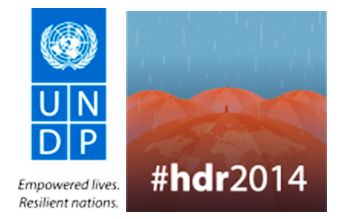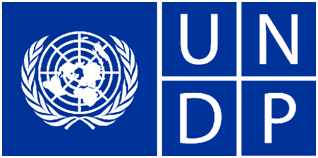Sierra Leone moves one place up the human development index but inequality and multidimensional poverty still very high
Report comes amidst Ebola health shock in Sierra Leone that is most destabilizing to households and communities.
Jobs, social protection and more cohesive societies required to secure Africa’s development gains.
Freetown, 25 July 2014 —Sierra Leone has moved one place up in the latest Human Development Report from 184th to 183rd registering the highest increase among the Mano River Union (MRU) and G7+ countries but multidimensional poverty and inequality is among the highest in the world despite recent high economic growth according to the latest report launched last week. The report states that while income poverty is 52.9%, 72.7% of Sierra Leoneans are multidimensional poor, among the highest in the world and comes amidst the potentially devastating Ebola health shock. The Report also positioned Sierra Leone among the least equal countries in the world along with Nigeria, Angola, Guinea-Bissau and Central African Republic. Photo credit (UNDP)

Minister of State, Alhaji A.B. Mansaray and UNDP Resident Representative and UN Resident Coordinator, David McLachlan-Karr launching the report
UNDP Resident Representative and Resident Coordinator, David McLachlan-Karr said that the report comes in the wake of the current health shock in Sierra Leone making the recommendations for addressing vulnerabilities in the Report particularly relevant. He said that “The Ebola virus epidemic, a health shock is most destabilizing to households and the society at large. It requires some of the recommendations from this report and in particular a holistic approach since it is both trans-boundary and multi-dimensional.”
David Mclachlan-Karr said at the Sierra Leone launch of the Report entitled: Sustaining Human Progress: Reducing Vulnerabilities and Building Resilience, “Sierra Leone’s achievements in human development, especially since 2005, are notable. Human Development Index (HDI) increased from 0.329 in 2005 to 0.374 in 2013.” He added “Its rank in the 2013 Index – 183rd out of 187 countries – is one place higher than last year, which translates to 1.84% increase- the highest in the Mano River Union and G7+ member countries That said, there is lot more catching up to do… Sierra Leone is lagging behind in gender equality and multi-dimensional poverty, which is 72.7%.”
Mclachlan-Karr noted that the 2014 Human Development Report entitled highlights the need for promoting people’s choices and protecting human development, adding that for the first time the report underscores the view that vulnerability threatens human development and that unless it is systematically addressed, progress will be neither equitable nor sustainable.
President for Sierra Leone’s foremost gender advocacy group 50/50 Group, Dr. Aisha Fofana Ibrahim said women are particularly vulnerable because “Women are always at risk of slipping into poverty but the risks are higher for women who are always at the bottom of the ladder in all aspects of development.”
Aisha Ibrahim also highlighted the threat posed by Ebola saying Sierra Leone is very vulnerable but women are particularly affected saying “Ebola is a shock we (Sierra Leoneans) are vulnerable to because we do not have the structures in place to deal with it effectively. At another level women are more vulnerable because of a number of reasons- they are primary care givers and in direct contact with the sick and more importantly are less educated and therefore limited access and choices.”
Dr. Aisha Ibrahim called for the provision of public goods, social protection, employment and basic services. She said rather poignantly that: “Having one woman break the glass ceiling in her career path may be empowering for that woman but not necessarily so for the majority of women. What is needed is the dismantling of structures and institutions that inhibit women’s empowerment. It is to create access for more women to belong and feel safe in the spaces previously denied them. Value has to be placed on women and girls- why are girls more malnourished, taken out of school in times of adversity and face the most discriminatory social attitudes? These all contribute to our vulnerability to shocks.”
Minister of State, Alhaji A.B. Mansaray who co-launched the Report pointed out that the need for taking an international perspective on managing transnational vulnerabilities like Ebola disease is major point noted in the report. The Minister also launched the start of the process of developing the 4th Sierra Leone National Human Development Report, which he says will “Take the global Human Development Report approach to the national level. It will be a country-led and country-owned process and expected to not only come up with policy options but also human development indicators at regional and district levels under the tentative theme: Building Resilience for Sustainable Economic Transformation to be completed and launched in December 2015.”
UNDP Senior Economist Moses Sichei explained to the gathered audience of diplomatic mission, development partners, Government of Sierra Leone officials and civil society that people’s vulnerability is influenced by their capabilities and the society they live in and that failures to protect people against vulnerability are mostly a consequence of inadequate policies and poor or dysfunctional social institutions. A better understanding of vulnerability and resilience from a human development perspective allows for a deeper analysis of the factors and policies that explain why some individuals, communities or countries are more resilient to adverse events and respond better to them. The 2014 HDR takes a human development perspective to vulnerability and goes beyond a narrow interpretation of vulnerability as exposure to risk.
A major addition to the Human Development index in 2014 is the introduction of a new measure, the Gender Development Index (GDI) based on sex-disaggregated Human Development Index, defined as the ratio of the female to the male HDI. The GDI value for Sierra Leone is 0.799, which ranks 139th out of 148 countries, again, meaning that Sierra Leone is at the bottom ladder in terms of gender development. The GDI means that females enjoy 79.7% of what their male counterparts enjoy in education, health and income.
The 2014 HDR paints a bleak picture for Sub-Saharan Africa despite tremendous economic growth figures.. The report shows that between 2000 and 2013, Sub-Saharan Africa had the second highest rate of progress in the Human Development Index (HDI), which combines achievements in income, health and education. Rwanda and Ethiopia achieved the fastest growth, followed by Angola, Burundi, Mali, Mozambique, the United Republic of Tanzania and Zambia. However, In spite of this progress, Sub-Saharan Africa is the most unequal region in the world, according to UNDP’s Coefficient on Human Inequality.
Around 585 million people, the equivalent of 72 percent of the region’s population, are either living in multidimensional poverty – with overlapping deprivations in education, health and living standards – or at risk of falling back into poverty, the Report shows. These groups often do not experience improvements in their standard of living because they have limited political participation, livelihood options and access to basic social services, and even when they do escape poverty, they can relapse rapidly into precariousness when crises hit.
These disparities affect individuals or even entire communities over a lifespan, based on gender, ethnicity, geographic location and other factors. For example, the Report shows that the region has the world’s highest disparities in health, and shows considerable gender inequalities in income, educational attainment and access to reproductive health services.
Noting that vulnerability can accumulate over the course of a lifetime, the Report asserts that policies to maximize people’s future opportunities should pay particular attention to specific periods in life. For instance, such policies would require investing in early childhood services, youth employment and support for older people.
Efforts to build social cohesion in conflict areas can lead to long-term reductions in the risk of conflict, while early warning systems and responsive institutions can lessen the impact of natural disasters. The report cites examples of peace architectures in Ghana, Kenya and Togo in facilitating dialogue and mediating disputes among communities during elections.
With 77 percent of the population in vulnerable employment, many of them youths, the Report calls on countries in Sub-Saharan Africa to adopt full employment policies and ensure that economic growth is employment-intensive, while paying special attention to the quality and security of the jobs created. Creating decent employment opportunities is critical to achieving substantive poverty reduction and social cohesion.
Acknowledging these challenges, it urges countries to transition from agriculture-based economies into industry and services, while supporting investments in infrastructure and education so that “modern formal employment gradually incorporates most of the workforce.”
Further, social protection schemes such as unemployment insurance and pensions, universal health coverage and cash transfers can help individuals and communities weather difficult times and invest in the future. For instance, South Africa’s Child Support Grant contributed to reducing the poverty rate among children, while in Mozambique, progressive laws have given poor communities increased access to land. Responsive and accountable institutions of governance are critical to overcoming injustice, vulnerability and exclusion that can fuel social discontent, while improving the delivery of services to all populations, the Report adds. While responding to emergencies is critical, building resilience requires sustained, long-term comprehensive efforts over time.
* * *
ABOUT THIS REPORT: The Human Development Report is an editorially independent publication of the United Nations Development Programme. For free downloads of the 2014 Human Development Report, plus additional reference materials on its indices and specific regional implications, please visit: http://hdr.undp.org
Stay with Sierra Express Media, for your trusted place in news!
© 2014, https:. All rights reserved.






